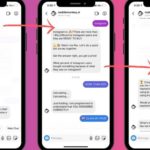LIFESTYLE
How Instagram + WhatsApp Automation Boost Sales and Lift Conversion Rates
November 1, 2025
In 2025, social messaging is no longer a “nice-to-have” channel — it’s the front door for modern sales. Instagram DMs and WhatsApp are where today’s
Read moreHow to Grow Your Business with Meta Ads: A Complete Guide
August 23, 2025
In today’s competitive digital marketplace, businesses can no longer rely solely on traditional marketing methods to reach customers. Consumers spend a large portion of their
Read moreWhy Top Businesses Are Betting on Cloud Storage
July 23, 2025
[ays_quiz id=’4′] In the fast-evolving digital world, the phrase “data is the new oil” holds more truth than ever. Whether it’s customer insights, marketing campaigns,
Read moreEntertainment

How Instagram + WhatsApp Automation Boost Sales and Lift Conversion Rates
shadmankhan654321
November 1, 2025

How to Grow Your Business with Meta Ads: A Complete Guide
shadmankhan654321
August 23, 2025

Why Top Businesses Are Betting on Cloud Storage
shadmankhan654321
July 23, 2025
Community

How Instagram + WhatsApp Automation Boost Sales and Lift Conversion Rates
shadmankhan654321
November 1, 2025
In 2025, social messaging is no longer a “nice-to-have” channel — it’s the front door for modern sales. Instagram DMs and WhatsApp are where today’s
How to Grow Your Business with Meta Ads: A Complete Guide
August 23, 2025
Why Top Businesses Are Betting on Cloud Storage
July 23, 2025
9-Ways How AI can Help you Grow with a Side Hustle
July 20, 2025
Why Your Business Should Definitely Have a Website
July 20, 2025









